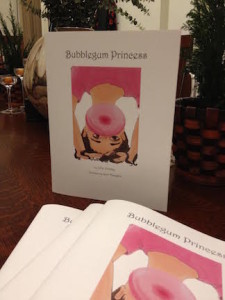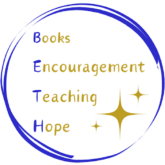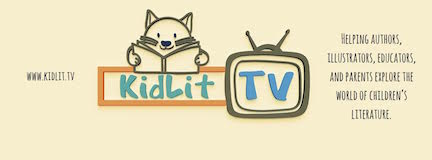 5 Tips for Sharing Your Picture Book Dummy
5 Tips for Sharing Your Picture Book Dummy
Sharing your work when it’s not quite finished is a difficult thing to do. But at some point, you will have to do this. Agents and editors are used to seeing works-in-progress. Their goal is to make stories better. If you don’t have an agent or editor, there are other ways to get valuable feedback.
Lori Hanson and I shared our picture book dummy with parents, educators, kids, and colleagues. This I recommend doing. We were armed with a stack of dummy books and fortified with excitement about what we had accomplished. Perhaps to much excitement – we did a couple of things I wouldn’t recommend doing.
For that reason, there are two types of tips for this post: HEY, DO WHAT WE DID! and PLEASE DON’T DO WHAT WE DID!
1 – Do create a questionnaire for readers. Make it simple, no more than 10 questions and leave a space for comments. We were concerned that a few of the words in Bubblegum Princess were too advanced for our readers. But would the adult reader think these words presented an opportunity to expand a child’s vocabulary? We decided to ask! (Click to view PDF. It will open in this window. Please click “back” button to come back to the post.)
2 – Do share your PB dummy with other writers and illustrators. Lori and I got straight to work on the picture book after the 2011 SCBWI winter conference. A year later, we brought copies of the picture book dummy to the 2012 SCBWI winter conference. We chatted with many folks about our princess and asked for critiques. By far the most helpful critique was given by the talented Donna Weidner, from the San Francisco North & East Bay chapter of SCBWI. She sent the princess back to us a few weeks after the conference with lots of suggestions on how she might be improved. We implemented many of her changes!
3 – Do share your PB dummy with family and friends. I include this tip because it’s always great to hear positive feedback and that’s most likely what you’ll get! Let this be your feel good moment in the process. You deserve it — you’re making art, and it feels great to hear that people like it! Enjoy. Then get back to work on making your book better.
4 – Don’t share your PB dummy with industry experts who have not offered a critique. At our second SCBWI conference, Lori and I were waiting for the elevator with an SCBWI faculty member. At a panel discussion earlier that morning, he had responded to a question I asked about self publishing our book. I reintroduced myself, we all chatted for a bit, and then I handed him our dummy book and asked if he might give us his thoughts. He was gracious and so very sweet about the whole thing, but we never heard back. I can imagine how overwhelming his conference would be if everyone presented a dummy book, manuscript, or illustration portfolio to him.
5 – Don’t share a dummy book that’s not ready to share! It’s hard to know when your work is ready to be shared publicly. We had an almost childlike enthusiasm about our picture book dummy – we were excited to show off this cool new thing that we could do. However, the revisions we made to the story (described in this post) were not included in the dummy book. That was unfortunate. Next time we’ll have the illustrations and story in the best shape possible before we create our dummy book. That way, we can evaluate the critiques, make revisions, and make our best work even better.
Even though we tripped up a bit, “tis better to have shared and tripped than never to have shared at all.” Apologies to Lord Tennyson.
I hope this was helpful. Please feel free to ask me any questions about self publishing in the comment thread below.
Next post I’ll share our pre-publication marketing plan with you.
Bios and Links
Julie Gribble was a Stony Brook Southampton Children’s Literature Fellow mentored by Emma Walton Hamilton and Cindy Kane Trumbore. She’s a full-time writer and a member of SCBWI, ChLA, BAFTA-NY Children’s Committee and is founder of KidLit TV, www.kidlit.tv, a video resource for the kid lit community.
Lori Hanson received her Master of Fine Arts from the San Francisco Art Institute and served an apprenticeship under celebrated artist Gregory Gillespie and studies with Jules Feiffer. She’s a member of SCBWI.
Bubblegum Princess, a picture book inspired by the Duke and Duchess of Cambridge, has received a First Place Royal Dragonfly Children’s Picture Book Award, a nomination for a Cybils Award, and is Story Monster Approved!
Twitter: @JulieGribbleNYC
Website: http://www.kidlit.tv
YouTube: http://www.youtube.com/kidlittv Pinterest: http://www.pinterest.com/kidlittv
Facebook: http://www.facebook.com/groups/kidlittv
Get your Backstage Pass to KidLit TV: http://www.kidlit.tv/newsletter
Lori Hanson’s website: http://www.rosengrove.com/bubblegum-princess.html
Bubblegum Princess website: http://nymediaworks.com/bubblegum-princess
Bubblegum Princess on Amazon: http://www.amazon.com/Bubblegum-Princess-Julie-Gribble/dp/0989091406
Bubblegum Princess in Square Market: https://squareup.com/market/ny-media-works-llc/bubblegum-princess


Thanks for hosting this series, Beth! This post was a bit rushed, but I’m looking forward to having more time to resume the series in the fall.